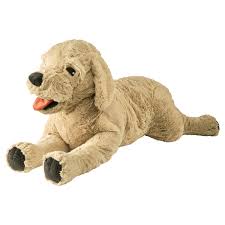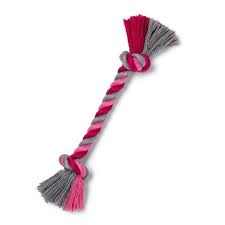The Importance of Dog Toys for Your Furry Friend
Dogs are not just pets; they are beloved members of our families. As responsible pet owners, it is essential to provide our canine companions with the care and attention they deserve. One way to keep your dog happy, healthy, and engaged is by incorporating toys into their daily routine.
Benefits of Dog Toys:
- Physical Exercise: Interactive toys such as balls, frisbees, and tug ropes are great for keeping your dog active and maintaining their physical health.
- Mental Stimulation: Puzzle toys and treat-dispensing toys challenge your dog’s mind, preventing boredom and providing mental exercise.
- Bonding Time: Playing with your dog using toys strengthens the bond between you and your furry friend, enhancing your relationship.
- Dental Health: Chew toys help keep your dog’s teeth clean and healthy by reducing plaque buildup and preventing dental issues.
- Anxiety Relief: Certain toys can help alleviate anxiety in dogs by providing a sense of comfort and security.
Choosing the Right Toy:
When selecting a toy for your dog, consider their size, age, breed, and play style. It’s important to choose toys that are safe, durable, and suitable for your dog’s specific needs. Always supervise your dog during playtime to prevent accidents or ingestion of toy parts.
In Conclusion
Dog toys play a crucial role in keeping your furry friend happy, healthy, and well-balanced. By providing a variety of engaging toys, you can enrich your dog’s life and ensure they lead a fulfilling existence as part of your family.
Top 9 Frequently Asked Questions About Dog Toys
- 1. What are the best types of toys for my dog?
- 2. How do I choose a safe toy for my dog?
- 3. Are there toys that can help with my dog’s dental health?
- 4. What are interactive toys, and why are they beneficial for dogs?
- 5. How can I prevent my dog from destroying their toys?
- 6. Are there specific toys recommended for different dog breeds?
- 7. Can toys help with training and behavior issues in dogs?
- 8. What should I do if my dog swallows part of a toy?
- 9. How often should I rotate my dog’s toys to keep them engaged?
1. What are the best types of toys for my dog?
When considering the best types of toys for your dog, it’s important to take into account your dog’s size, age, breed, and individual preferences. Interactive toys such as puzzle toys, treat-dispensing toys, and balls are great for mental stimulation and physical exercise. Chew toys can help with dental health and reduce anxiety. Choosing durable and safe toys that match your dog’s play style is key to providing them with engaging and enjoyable playtime. Remember to supervise your dog during play to ensure their safety and well-being while having fun with their toys.
2. How do I choose a safe toy for my dog?
When selecting a safe toy for your dog, it is crucial to consider factors such as the size and chewing habits of your pet. Opt for toys that are appropriate for your dog’s size to prevent choking hazards. Look for toys made from non-toxic materials and avoid small parts that could be easily swallowed. Choose durable toys that can withstand your dog’s chewing strength to prevent breakage and ingestion of harmful fragments. Always supervise your dog during playtime with new toys to ensure their safety and enjoyment.
3. Are there toys that can help with my dog’s dental health?
Yes, there are toys specifically designed to promote your dog’s dental health. Chew toys, dental chews, and interactive toys with textured surfaces can help clean your dog’s teeth and massage their gums as they chew and play. These toys can reduce plaque buildup, prevent tartar formation, and contribute to better overall dental hygiene for your furry friend. It’s important to choose dental toys that are safe, durable, and appropriate for your dog’s size and chewing habits to ensure maximum benefit for their oral health. Regular use of dental toys can be a fun and effective way to support your dog’s dental care routine.
4. What are interactive toys, and why are they beneficial for dogs?
Interactive toys are specially designed dog toys that require the active participation of your furry friend to engage with them. These toys often involve puzzles, treat dispensers, or toys that encourage physical activity and mental stimulation. Interactive toys are beneficial for dogs because they provide mental exercise, help prevent boredom, and promote physical activity. By engaging with interactive toys, dogs can stay mentally sharp, alleviate stress and anxiety, and strengthen their bond with their owners through interactive play sessions. These toys are not only fun for dogs but also contribute to their overall well-being and happiness.
5. How can I prevent my dog from destroying their toys?
To prevent your dog from destroying their toys, it’s important to choose toys that are durable and designed for heavy chewers. Opt for toys made from tough materials such as rubber or nylon that can withstand your dog’s chewing habits. Rotate your dog’s toys regularly to keep them interested and prevent boredom, which can lead to destructive behavior. Supervise your dog during playtime and intervene if you notice them trying to dismantle a toy. Encourage positive chewing behavior by providing appropriate chew toys and rewarding your dog when they play with their toys gently. Consistent training and positive reinforcement can help curb destructive tendencies and promote healthy play habits in your furry friend.
6. Are there specific toys recommended for different dog breeds?
When it comes to selecting toys for your canine companion, considering the specific needs and characteristics of different dog breeds is essential. While there may not be strict rules dictating which toys are suitable for each breed, it is advisable to choose toys that align with a dog’s size, energy level, and chewing habits. For example, smaller breeds may prefer plush toys or smaller balls, while larger breeds might benefit from sturdy chew toys or interactive puzzle games. Understanding your dog’s breed-specific tendencies can help you make informed decisions when it comes to selecting the most appropriate toys for their enjoyment and safety.
7. Can toys help with training and behavior issues in dogs?
Toys can indeed play a significant role in training and addressing behavior issues in dogs. Interactive toys that require problem-solving or reward-based play can help stimulate a dog’s mind and keep them engaged, which can be particularly beneficial for training purposes. Toys can also serve as a positive outlet for excess energy, reducing destructive behaviors that may stem from boredom or lack of mental stimulation. By incorporating appropriate toys into training sessions, pet owners can reinforce desired behaviors and discourage negative ones, ultimately contributing to a well-rounded and well-behaved canine companion.
8. What should I do if my dog swallows part of a toy?
If your dog swallows part of a toy, it is crucial to act quickly and seek veterinary attention immediately. Swallowing foreign objects can pose serious health risks to dogs, including choking, intestinal blockages, or internal injuries. Do not attempt to induce vomiting or remove the object yourself, as this can cause further harm. Contact your veterinarian for guidance and follow their instructions to ensure the safety and well-being of your furry friend. Regularly inspect your dog’s toys for signs of wear and tear to prevent accidental ingestion of small parts.
9. How often should I rotate my dog’s toys to keep them engaged?
To keep your dog engaged and prevent toy boredom, it is recommended to rotate your dog’s toys regularly. A good practice is to switch out a few toys every week, introducing new ones while temporarily removing some old favorites. This rotation helps maintain your dog’s interest and excitement in playtime, ensuring they stay mentally stimulated and entertained with a variety of toys. By offering a fresh selection of toys periodically, you can keep your furry friend engaged and happy during their play sessions.




